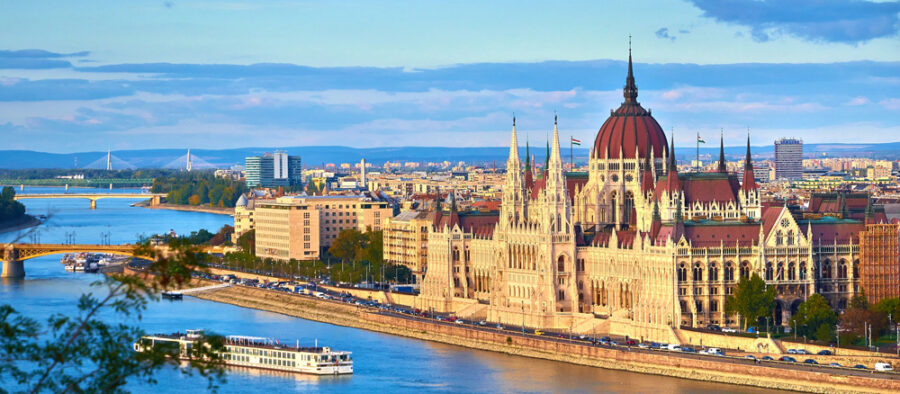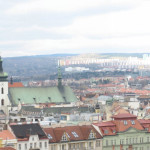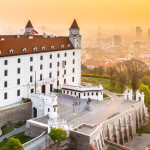
14 Dec Budapest
Hungary’s capital Budapest is a vivid metropol with the scene of classical music, entertaining nightlife and natural thermal baths. It occupies both banks of the Danube and it has appr. 1,7 million residents.
Budapest today is the result of a historic amalgamation of the separate cities of Buda and Pest. Locals are still talking about Buda and Pest as separated objects, Pest covering the eastern side of Danube (districts IV-IX) and Buda western (districts I-III, XI-XII, XXII).
The first permanent settlement here were built by Celts before 1 AD. Later it was occupied by the Roman Empire and the Roman settlement called Aquincum here was the capital of the Pannonia Inferior province. Hungarians came here at the end of the 9th century. In 1361 Buda became the capital of Hungary.

What to do and see in Budapest
Great Synagogue
Budapest has had Jewish presence for centuries and Europe’s greatest synagogue seating 3,000 people at Dohány Street 2-8 is still active. It was built between 1854 and 1859 in the Moorish Revival style, and it is architectonically rarely unique having two 42 meters high domes. Synagogue complex consists the synagogue, the Heroes’ Temple dedicated to Hungarian Jews soldiers fallen in World War I, a museum and a beautiful cemetery. There is also the Raoul Wallenberg Holocaust Memorial Park dedicated to Swedish diplomat Raoul Wallenberg, who saved thousand Hungarian Jews during the Nazi occupation and Hungarian fascist regime during the later stage of World War II, and died in Soviet Gulag camp.
Palace of Arts
This huge concrete building houses a museum of modern art, a festival theatre and the Béla Bartók National Concert Hall, which has included its program classical, jazz and world music concerts, and also special children programmes as well as opera performances. Palace of Arts holds annual Wagner festival in June. More info at palace’s homepage.
Elizabeth Lookout
This tower located on the Janos Hill is Budapest’s highest peak (527 meters) and it offers the remarkable view over Buda and to the Mátra mountain range in distance. Built in 1911, the tower was named after Empress Elisabeth, wife of Emperor Franz Joseph I. There is chair-lift access to the top via terminal of bus 291. Open hours of chair-lift are between 15th of May and 15th of September: 9AM-5PM, between 15th of September and 15th of May: 9:30AM-4PM. A single ticket costs HUF 750 and a return ticket HUF 1300.
Margaret island
This 2,5 kilometres long and 500 meters wide island on the Danube is the real oasis in middle of the pulsating metropol. Mostly covered with parks, it is a well-know area for relaxing. The island spans the area between the Margaret Bridge (south) and the Árpád Bridge (north).
Here is a Japanese garden, tiny zoo, a fountain near which music is played and light shows are performed in summer, and an octagonal water tower which serves as a vantage point. Peacocks are strolling freely on the paths of this lovely island and there is also an open air-theater offering various plays while summer.
Shopping
Pedestrian street Váci utca is a well-known shopping district full of boutiques, there is a shopping mall at its end. Prices here are high. Nagy Körút Boulevard avoiding the city center has classy stores and it is popular among locals.
Jewish Quarter, nearby the Deák (Ferenc) tér Square at the end of the Károly körút Boulevard, has lots of cozy stores selling books, clothing and various other stuff, here is also good cafés and restaurants.
Recreation
Baja Bikes offers sighseeing tours around Budapest by bicycles or walking. Budapest is well-known for relaxating thermal baths. Most traditional are Gellért Bath (Kelenhegyi utca 4, Buda) and Széchenyi Spa ( Állatkerti krt. 11, Pest).
Pics: Wikipedia Commons with the CC-BY licence / Mediocrity, Globetrotter19, MotorosGeri, Joszef Rozsnya, scheimann, Moyan Brenn
| Budapest, Unkari | 13°C broken clouds | |
Wind
6 m/s, E
Humidity
58%
Pressure
753.06 mmHg | ||
Top 5 in Budapest
- Thermal baths
- Shopping in Jewish Quarter
- Strolling in Margaret Island
- Great Synagogue
- Buda
How to get in Budapest
 Budapest has the Franz Liszt International Airport. List of its airlines is here. The main public transit connection from the airport to the city is to take bus 200E from the airport or metro line M3.
Budapest has the Franz Liszt International Airport. List of its airlines is here. The main public transit connection from the airport to the city is to take bus 200E from the airport or metro line M3.
 Budapest’s main railway stations are Keleti pályaudvar (Eastern Railway Station), Déli pályaudvar (Southern Railway Station) and Nyugati pályaudvar (Western Railway Station). Most international trains arrive at Keleti. Information about the train timetables in Europe is here.
Budapest’s main railway stations are Keleti pályaudvar (Eastern Railway Station), Déli pályaudvar (Southern Railway Station) and Nyugati pályaudvar (Western Railway Station). Most international trains arrive at Keleti. Information about the train timetables in Europe is here.
 Hungarian national coach network is operated by Volán Association. Its timetables are here. Eurolines operates from various European cities to Budapest. Most connections run two or three times a week, connections to/from Austria and Slovakia run daily. Orange Ways also offers cheap-priced tickets from e.g. Germany, Netherlands, Czech Republic and Poland to Budapest. Most buses from abroad arrive and departure at Népliget Bus station. Information about bus timetables in Europe is here.
Hungarian national coach network is operated by Volán Association. Its timetables are here. Eurolines operates from various European cities to Budapest. Most connections run two or three times a week, connections to/from Austria and Slovakia run daily. Orange Ways also offers cheap-priced tickets from e.g. Germany, Netherlands, Czech Republic and Poland to Budapest. Most buses from abroad arrive and departure at Népliget Bus station. Information about bus timetables in Europe is here.
How to get around in Budapest
Budapest’s public transportation is relatively easy to use and reaches the major parts of the city. Metro lines covers most central areas, but in Buda busses or trams comes in need. Ticket prices and the route planner are visible here.




